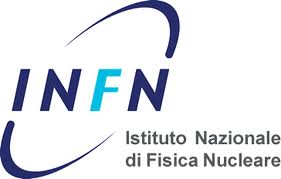Detector
The BESIII detector is a major upgrade of the previous BESII spectrometer. The BESIII detector has the typical shell-like structure of a collider experiment optimized for flavor physics, with large similarities with BELLE, BaBar, CLEOc, and KLOE's detectors. It is based on a barrel (which covers the angular region of |cosθ| < 0.82), and two endcaps (0.86 < |cosθ| < 0.92), covering 93% of the 4π solid angle. From the interaction point,it is possible to find the Beryllium beam pipe, the Multi-layer Drift Chamber (MDC), the Time-Of-Flight (TOF) counters, and the CsI(Tl) Electromagnetic calorimenter (EMC). All those detectors operate inside a 1 Tesla axial magnetic field provided by a large superconductive solenoid. In the return iron yoke, there are 9 (8) Resistive Plate Chambers (RPCs) in the barrel (endcaps), deployed as Muon Counters (MUC).
More information on BESIII detector can be found at the following links:
MDC http://bes3.ihep.ac.cn/system/dc/dc.htm
TOF http://bes3.ihep.ac.cn/system/tof/tof.htm
EMC http://bes3.ihep.ac.cn/system/calorimeter/calorimeter.htm
MUC http://bes3.ihep.ac.cn/system/muc/muc.htm
Solenoid http://bes3.ihep.ac.cn/system/magnet/magnet.htm
A comprehensive description of the BESIII detector can be found in
http://bes3.ihep.ac.cn/pub/doc/NIMA%20614(2010)345-399.pdf
(Nucl.Instrum, Meth. A614 (2010) 345-399
Several upgrades were completed since the start of the operations in 2009. In 2012 the Italian Collaboration has installed a Zero Degree Detector (ZDD), to operate as luminometer and to provide informations on small angles ISR photons. In the 2016, RPCs were installed also in the endcaps to operate as TOF counters.
A major upgrade is planned for the inner part of the drift chamber, that is experiencing aging effects due to the high luminosity of the BEPC-II collider. The approved solution is to substitute in 2018 the inner drift chamber with a new inner tracker based on the innovative Cylindrical Gas Electron (CGEM) technology. The Italian collaboration is leading the project for what concerns both the design of the detector and the custom electronics. The BESCGEM project is funded by the European Commission within the H2020-RISE-MSCA-2014 actions and involves, apart from INFN and IHEP, also institutes from Mainz and Uppsala University.


